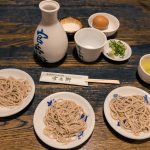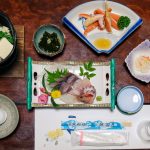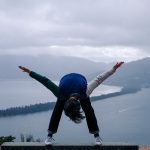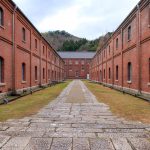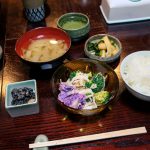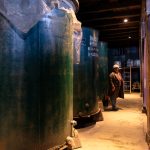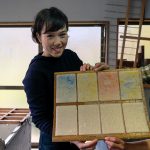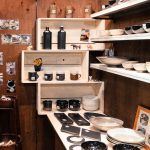Images/text: the Kyoto Traveller
Since antiquity, Amanohashidate, a sandbar stretching between 20 and 170 m wide and some 3.6 km in length, has been designated as one of the Three Main Views of Japan along with Matsushima and Miyajima. The “Tango no Kuni Fudoki”, a book penned in ancient Japan, denotes that Amanohashidate was once a bridge to heaven, built by the deity Izanagi. When the bridge collapsed, it separated Aso Bay from Miyazu Bay. Atop Amanohashidate there are 8,000 pine trees, making this site one of Japan’s top 100 pine forests.
Getting there
From Kyoto station, there is an express train to Amanohashidate. Please note that some trains may require a switch at Fukuchiyama while some offer non-stop rides. If you are departing from Osaka station, you will likely need to switch trains once at Fukuchiyama.
A great piece of news is that JR West Japan has taken heed of tourists’ feedback and has expanded the scope of usage for its JR-West Rail Pass (or the Kansai Wide Area Pass). Starting April 10, 2017, all passes sold can be used for Tottori, as well as Kyoto’s Tango Railway (with access to Amanohashidate). You can even hop on JR West Japan’s buses with the pass! This means that if you were to purchase the JR-West Rail Pass, you shall no longer need to dish out extra cash to get to Amanohashidate.
If you are planning to take Tango Railways’ sightseeing trains, the pass will cover a free ride on the Aomatsu. An extra 540 yen fee is applicable if you wish to take the Akamazu, and there is no discount on the Kuromatsu train.
Recommended routes for Amanohashidate
1. Complete route: about 4-5 hours exclusive of meal time. Amanohashidate station > ferry pier > Motoise Kono Shrine > Kasamatsu Park > Nariai-ji Temple > Manai Shrine > ferry pier > Chion-ji > Amanohashidate Pine Forest > Amanohashidate Shrine and Isoshimizu > Amanohashidate View Land > Amanohashidate station
2. Highlight route: about 3 hours. If you skip Amanohashidate View Land you will save another hour. Amanohashidate station > ferry pier > Motoise Kono Shrine > Kasamatsu Park > ferry pier > Chion-ji > Amanohashidate Pine Forest > Amanohashidate View Land > Amanohashidate station
3. The free route: this route will essentially be entirely free! If you are looking to visit the Amanohashidate but cash is tight, consider this route which will take you about 4 hours. Amanohashidate station > Chion-ji > Amanohashidate Pine Forest > Amanohashidate Shrine and Isoshimizu > Motoise Kono Shrine > walk to Kasamatsu Park > Manai Shrine > Amanohashidate Pine Forest > Amanohashidate station
Once you arrive at Amanohashidate, start your sightseeing! In the photo you will see the tourist information center located within Amanohashidate station. If you are looking for information on the area, head to this place.
There are lockers at the station but they are only medium or small lockers. If you are travelling with big suitcases, you may deposit your luggage at the souvenir shop in front of the station. The souvenir shop is located diagonnally across the the station, and is very tourist-friendly. The luggage deposit is free of charge, but be sure to thank the staff for their service! Of course, it would be even better if you can purchase some souvenirs on your way home. The shop closes without a regular schedule, so good luck!
A 5-minute walk from the station will bring you to Chion-ji. Chion-ji is one of the three sacred Monju temples in Japan and houses the Monju Bodhisattva, governor of wisdom. The other two sacred Monju temples are Kameoka Monju in Yamagata Prefecture and Abe Monju in Nara. The gates to Chion-ji are the biggest gates to any temple within the Tango region.
Sights to see
A 5-minute walk from the station will bring you to Chion-ji. Chion-ji is one of the three sacred Monju temples in Japan and houses the Monju Bodhisattva, governor of wisdom. The other two sacred Monju temples are Kameoka Monju in Yamagata Prefecture and Abe Monju in Nara. The gates to Chion-ji are the biggest gates to any temple within the Tamba region.
The Kaisenkyo (rotating) bridge next to Chion-ji connects Amanohashidate and the ground to Monju temple. When large-sized ships need to pass, the bridge will rotate at a 90° angle, allowing the vessel to go through.
Once you enter from the Rotating Bridge you will see the Amanohashidate Pine Forest. Here, there is a stone tablet showcasing this site being one of Japan’s Three Views. Be sure to take a photo here! The Amanohashidate Pine Forest is home to some 8,000 pine trees. Recent research estimates that the pine forest was formed some 3,000 years ago.
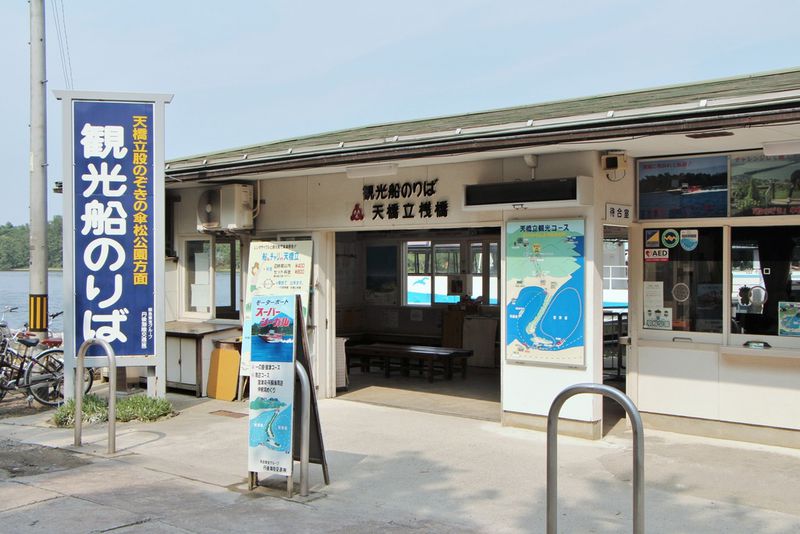
You can hop on a sightseeing boat next to the Chion-ji. On weekdays, the boat comes once every 30 minutes. From 10 am to 4 pm on weekends and public holidays, the boat comes once every 20 minutes. Please note that the schedule for the final crossing changes in accordance to the season.
Once you reach the dock at Ichinomiya, you will see Motoise Kono Shrine, Tango’s first and biggest shrine. Motoise Kono Shrine is home to Ise Shrine in Mie Prefecture. The architectural style employed here is Shinmeizukuri. Within the shrine there is a water organ cave.
5 minutes on foot from Motoise Kono Shrine will bring you to the cable car stop called Fuchu. From here, the ascent will bring you to Kasamatsu Park.
Kasamatsu Park and its observatory looking out onto Amanohashidate have been famous since the age of antiquity. Here, you can look out at the famous “reverse” and “naname moji” (“diagonal character”) views of Amanohashidate. You may also board buses to Nariai-ji Temple here. The return fare for the cable car or aerial lift to Kasamatsu Park costs 680 yen for adults and 340 yen for children. Please note that the aerial lift will not run during the winter season.
Nariai-ji Temple was constructed in the year 704. It is renowned as the 28th temple on the Saigoku Kannon Pilgrimage, a pilgrimage consisting of thirty-three Buddhist temples. Its five-tier pagoda has recently completed its reconstruction and repair works. The one-way fare for the bus ride from Kasamatsu Park to Nariai-ji Temple costs 350 yen for adults and 180 yen for children. Entrance to Nariai-ji temple costs 500 yen for adults. If you have a 1-day pass or took the bus, the discounted fee is 400 yen. For high school and junior high school students, the fee is 200 yen. Don’t miss the heather flowers in full bloom here from the end of April to early May, or the fall leaves in mid to late November. When winter comes along, snow will pile up in the area. Visitors are invited to enjoy snow-covered sights and play in snow in the area.
Take a 10 minute walk from Motoise Kono Shrine and you will reach the ancient Manai Shrine (which, according to historical records, was a sacrificial venue 2,500 years ago). The aura and atmosphere here is very unique. The water source, aptly entitled “Manai”, is also well renowned.
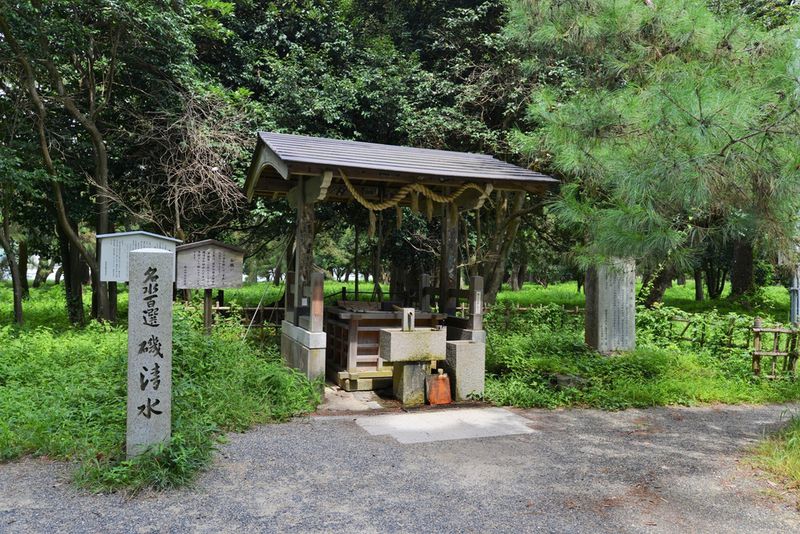
Amanohashidate Shrine is located within Amanohashidate and the water source of Isoshimizu has made it to the list of “Top 100 water sources of Japan”. Ancient legend has it that drinking from this water source will offer health and longevity. In fact, this is only an underground spring, and the source is not safe for consumption.
The last venue on the list is Amanohashidate View Land. The cable car stop is a 5 minute walk from Amanohashidate train station. View Land offers a myriad of facilities for visitors of all ages. From here, Amanohashidate will appear like a dragon soaring in the sky. The location thus earned the title of “Flying Dragon Observatory” (“Hiryu-kan”). A return trip takes between 40 minutes to 1 hour. For visitors who do not plan to stay long but still wish to have a panoramic view of Amanohashidate, this is a great spot to visit.
Don’t forget that 50 yen discount coupons are available here at the tourism bureau and nearby shops. They cannot be used in conjunction with other promotions. Be sure to grab the coupons if you head to this spot. The cable car and aerial lift costs 850 yen for adults and 450 yen for children.
Local cuisine

Wisdom cake(Chie no Mochi Rice Cake)
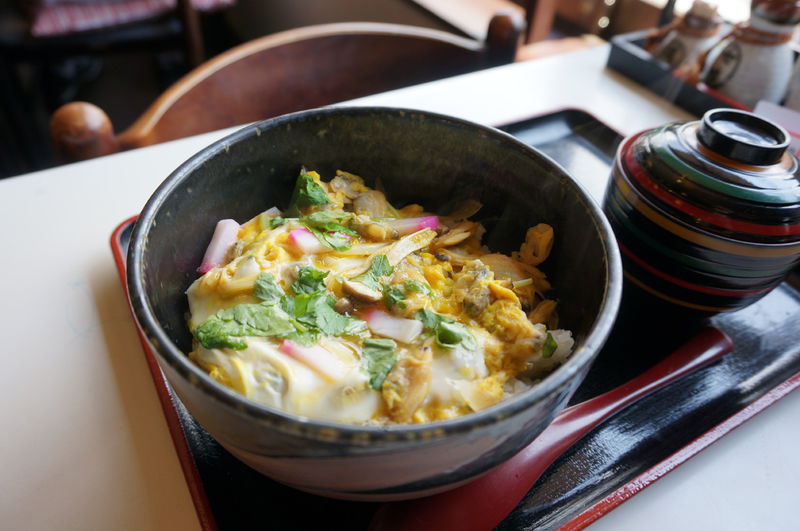
On sale at the main avenue in front of Chion-ji as well as the four teahouse(chaya).
The restaurant in front of Amanohashidate station offers two popular dishes, which are the flower clam don and seafood don (don: ingredients placed atop a bed of rice). Other fresh, seasonal ingredients are also available as part of their menu. On the ground floor you will find a souvenir shop, with its restaurant on the first floor.
This restaurant is located within the Amanohashidate Pine Forest. The flower clam don on sale here is likely the most famous within the entire Amanohashidate region. Roasted black chikuwa (a tube-like food product usually made from a mix of seafood, egg white and starch) sold here are also very famous.
Flower clam don: 1,000 yen (can be purchased with the 1,000 yen Amanohashidate Meal Voucher Book)
There are several shops and restaurants near the cable car stop at Kasamatsu Park as well. Here are some of the ones I usually go to.
The first one is located right underneath the cable car of Kasamatsu Park. The ground floor is a souvenir shop and the first floor is the dining area. There is free wifi available within the shop.

Clam don, a dish which is often featured in TV shows and on magazines, are available here for 1,200 yen each (can be purchased with the 1,000 yen Amanohashidate Meal Voucher Book). The flower clams here are huge!
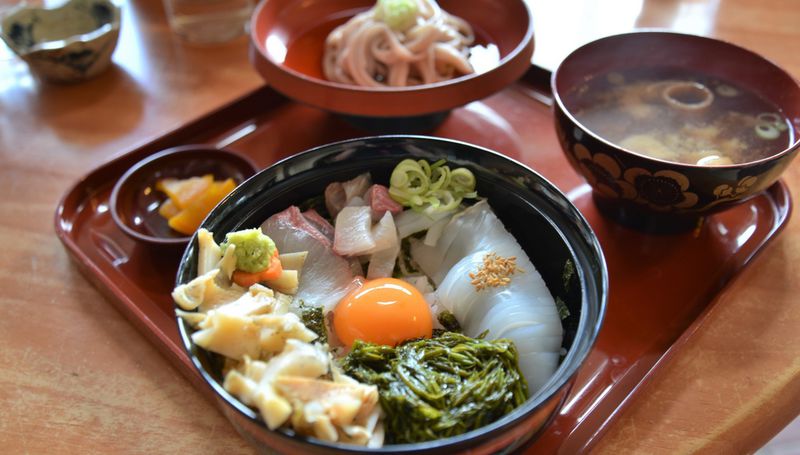
My personal suggestion, the squid don
The second restaurant offers an extremely tasty squid don.
This dish, called the “Treasure of Tango Don”, is different from the squid don I have just mentioned. Other than squid, other specialty ingredients from the Tango region are used in this dish and change per the seasons. If you love squid, don’t miss out on this dish



